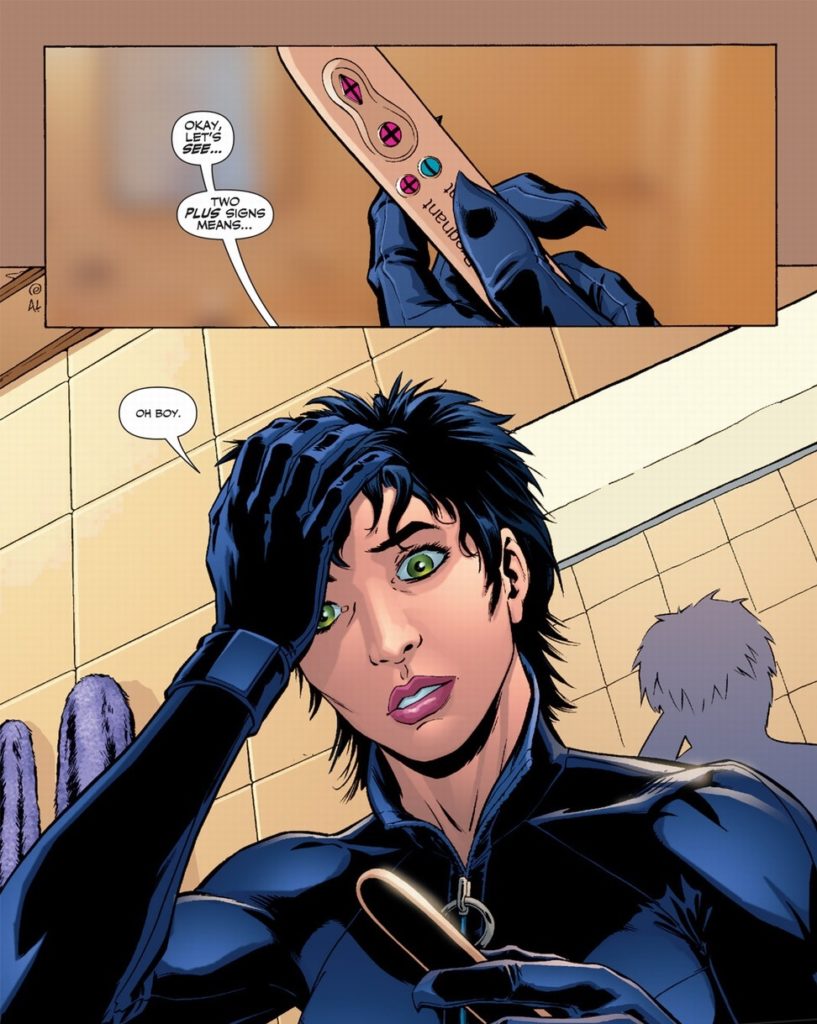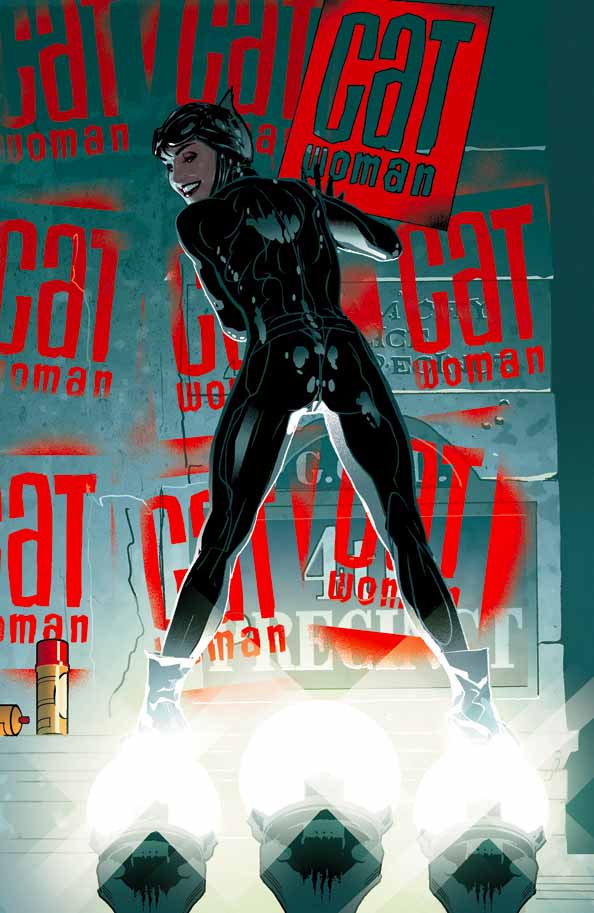Buy collections of my Catwoman run in various formats here. Buy electronic versions here.
Catwoman remains my longest-lasting comics gig, lasting from issue 44 to issue 82. It was blessed with art by Pete Woods and David Lopez & Alvaro Lopez, colors by Jeromy Cox and letters by Jared K. Fletcher, plus covers by Adam Hughes, and I’m guessing his brand of clever cheesecake artistry did as much to sell the book as anything we were doing on the insides.
 I had a great time writing the adventures of Selina Kyle and her merry band of misfits, and I had a long enough run on the book to do a lot of things I’ve always dreamed of in comics, including have Catwoman successfully rob Lex Luthor, face off against Superman, beat up the Joker and, in a sort-of-dream sequence, take on the entire Justice League — and win. Also, as part of DC’s big, life-changing event of the era, “One Year Later,” we made Catwoman a mommy and, I’m proud to say, deal with those responsibilities in a semi-realistic way. I even got to indulge my own movie obsession by reviving (and completely retooling) an old Batman villain called The Film Freak and, in a later subplot, have Selina Kyle change her name to Irena Dubrovna, which all movie geeks will recognize as the name of the main character in (what else?) “Cat People.”
I had a great time writing the adventures of Selina Kyle and her merry band of misfits, and I had a long enough run on the book to do a lot of things I’ve always dreamed of in comics, including have Catwoman successfully rob Lex Luthor, face off against Superman, beat up the Joker and, in a sort-of-dream sequence, take on the entire Justice League — and win. Also, as part of DC’s big, life-changing event of the era, “One Year Later,” we made Catwoman a mommy and, I’m proud to say, deal with those responsibilities in a semi-realistic way. I even got to indulge my own movie obsession by reviving (and completely retooling) an old Batman villain called The Film Freak and, in a later subplot, have Selina Kyle change her name to Irena Dubrovna, which all movie geeks will recognize as the name of the main character in (what else?) “Cat People.”
Our run came to an end, of course, but DC let us end it on our own terms, with Selina dealing with the weight of giving up her daughter (to keep the kid safe) and, in the very last scene in our very last issue, stealing the Batmobile right out from under Batman’s nose. I’m proud of what we did, and though some fans prefer Selina as a sexed-up, dressed-down bad girl, I think we gave her some genuine depth. And, in his book “The Many Lives of Catwoman,” author Tim Hanley agreed:
Nonetheless, Catwoman’s two-year depiction of Selina as a single mother marked a shift in how mothers were portrayed. Motherhood had been a shallow, overshadowed institution in comics for decades, but Pfeifer wrote a story with a solid emotional core despite the fantastical circumstances. While mothers in the real world don’t have to deal with things like Soviet-inspired supervillains, Selina’s broader concerns were reflective of mothers everywhere. The arc helped to expand the scope of motherhood in superhero comics, pushing the boundaries of what could be done with female characters moving forward.
